|
|
LESSON 4 • MYSTERIES OF OUR WORLD
1.1 What do you know about the lost city of Atlantis? Where was it? What happened to it? Discuss. 1.2 You are studying the mystery of Atlantis in your History class and your teacher has asked you to make a short presentation to a group of British students who are visiting your school. You have already done some research, but some information is missing from your notes below. Listen to part of a BBC radio programme about Atlantis and fill in the gaps in your notes.
NOTES ✓ Earliest records of Atlantis: 370 BC.
Did you know? Over 5,000 books |
|
LESSON 4 • MYSTERIES OF OUR WORLD
2.1 Work in pairs. Complete the first two columns of the KWL chart with what you already know about
2.2 Mr. Alexandros Demetriou, a famous Greek archaeologist, was interviewed about Atlantis for an
A MATHS PROBLEM FOR YOU 2.3 Do you think Atlantis really existed or is it a
|
|
LESSON 4 • MYSTERIES OF OUR WORLD
4.1 Suppose you are Mr. Brown, a British archaeologist. You have just made an interesting discovery
NOTES • investigate / archaeological |
|
LESSON 4 • MYSTERIES OF OUR WORLD
4.2 Work in pairs. One of you is Mr. Brown and the other one is a reporter who is writing an article |
e.g. Reporter: Mr. Brown, would you like to say a few words to
our readers about the amazing discovery you made two
weeks ago? |
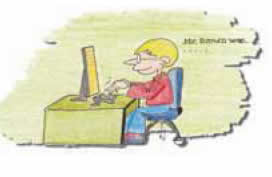 |
|
Work in groups. What do we call the giant waves that washed away Atlantis? What do you know about
|
LESSON 4 • MYSTERIES OF OUR WORLD
|
|
LESSON 5 • ACROSS THE AGES
1.1 Many museums all over the world exhibit items from people’s everyday life in the past. What would 1.2 Mr. Vabriani, a famous geologist, is being interviewed on Sky-TV. He is talking about a geological 1.3 These pictures show findings from this city. Can you guess what they show?
|
|
LESSON 5 • ACROSS THE AGES
2.1 Read the text and look at its title. Why do you think the writer chose this specific title?
|
2.2 The sentences below summarise the paragraphs of the text. Match each one with
an appropriate paragraph. |
Did you know? When Mt. Vesuvius, |
LESSON 5 • ACROSS THE AGES
Look at the pictures. What do
|
LESSON 5 • ACROSS THE AGES |
|
4.2 Look at this sentence. 4.3 Now read the following sentences and circle 4.4 Compare the following examples. Is there a difference in meaning?
|
‘used to + infinitive’ is used: |
|
5.1 It was 12:00 noon on August 24th in Pompeii. Look at the pictures and say what was happening
|
LESSON 5 • ACROSS THE AGES 5.2 Mini-project: A street from the past
|
LESSON 5 • ACROSS THE AGES |
|
The Romans invented the calendar and gave names to the
|
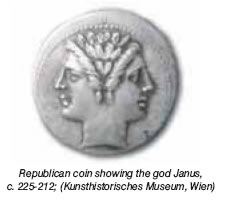 |
|
You have received the following e-mail from your Swedish penfriend. Read the e-mail and reply to your friend answering his questions.
|
|
LESSON 6 • LIFE ON THE WATER
1.1 Look at the pictures below and discuss how civilisations began.
1.2 You are doing a project on pyramids from all over the world. You have drawn up a chart to show
|
|
2.2 The following article is about ancient Egypt. You want to read it but paragraphs 2-5 are not presented in the right order because of a printing error. Can you put them in the right order? |
|
LESSON 6 • LIFE ON THE WATER LAND OF THE PHARAOHS
Adapted from: “History of Man: The Last 2 Million Years”, Reader’s Digest 2.3 Listen to check if you have found the right order. |
LESSON 6 • LIFE ON THE WATER |
|
2.4 Read the article again and tick whether the statements are True (T), False (F) or Not Mentioned (NM). 1. The river Nile flows through Egypt and other countries as well.
|
|
|
4.1 Look at the following sentence. What happened first? Tick. |
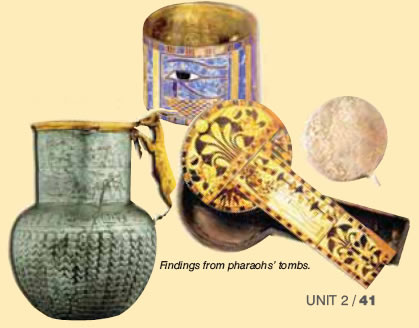 |
LESSON 6 • LIFE ON THE WATER |
|
4.2 Simple Past or Past Perfect
We use the Past Perfect to talk about: |
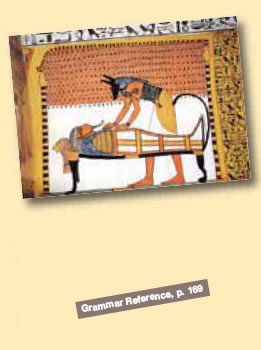 |
|
You are writing an article about activities in the ancient world for your school newspaper. Below are |
|
1. Egyptian farming
e.g. Egyptian farmers cleared away the stones and branches from their fields after the floods had gone down. |
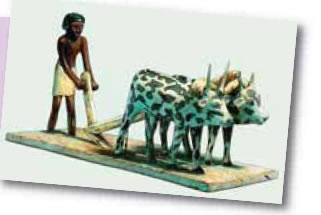 |
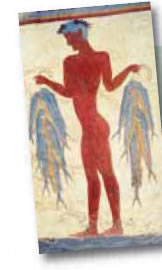 |
2. Wall paintings in Santorini
|
LESSON 6 • LIFE ON THE WATER |
|
Imagine you are taking a guided tour |
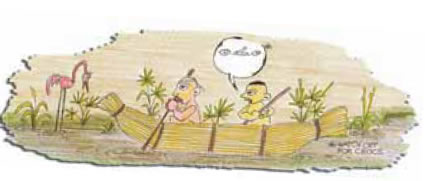 |
|
LESSON 6 • LIFE ON THE WATER |
|
7.1 Minoas was a young boy who lived in ancient
NOTES 1. Who is the main character in 7.2 Find the following in Minoas’s story. 7.3 You have decided to enter a story competition. 7.4 Write your story. 7.5 Read your partner’s story and help him/her 7.6 Rewrite your story in order to improve it. Take |
|
SELF-ASSESSMENT |
|
1. Vocabulary
1. They evacuated the town after the volcanic ... / 8 1.2 Circle the appropriate phrasal verb in the ... / 4 |
1.3 React to the news in 1.2 using an appropriate ... / 4
2.2 Correct the mistakes where necessary. Tick |
SELF-ASSESSMENT |
|
3. When did you last visited Egypt? Two years ago. ... / 6
|
were you with? What happened? What did you do? ... / 10 |
 Work by yourself and tick the sentences that are true for you. You can discuss your answers in class.
In Lessons 4, 5 and 6 you worked in pairs or groups. Write down some good and bad points and discuss Reflecting on your Learning |
|
Tick the sentences that are true for you. At the end of Lessons 4, 5 and 6, I think I can
|
o talk about actions that happened before |